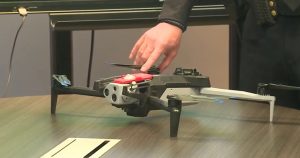Wingcopter, a leader in drone delivery solutions, has joined forces with Ansys to enhance its drones’ ability to deliver critical medical supplies to remote areas. By leveraging Ansys’ advanced simulation tools, this collaboration aims to extend drone flight range by over 10%, ensuring vaccines, medicines, and medical equipment reach those in need more effectively.
Enhancing Drone Performance with Simulation
The partnership integrates Ansys’ simulation software, including Discovery 3D, LS-DYNA, Fluent, and medini analyze, to optimize Wingcopter‘s drone designs. These tools allow engineers to refine drone performance virtually, analyzing factors like aerodynamics and structural integrity.
As a result, Wingcopter’s drones, equipped with vertical takeoff and landing (VTOL) capabilities, redundant battery systems, and four tiltrotor motors for seamless hover-to-cruise transitions, can achieve a flight range increase of more than 10%. This translates to extending a typical 62-mile (100-km) range to approximately 68 miles (109 km), enabling deliveries to even more isolated communities.

Ansys’ technology also validates drone performance under challenging conditions, such as high winds or heavy rain. “Simulation helps us predict and optimize drone behavior across diverse environments, reducing the need for costly physical prototypes,” said a Wingcopter spokesperson. This approach accelerates development timelines and ensures reliability for critical missions.
Ensuring Safety and Compliance
Safety is paramount in medical drone delivery, where regulatory standards are stringent. Ansys’ simulation solutions support Wingcopter in meeting these requirements by modeling drone behavior at various altitudes and weather scenarios. The medini analyze tool, for instance, streamlines compliance with aviation safety certifications, ensuring drones can operate reliably while carrying payloads like blood samples or medical equipment. This reduces risks and builds TRUST in drone delivery systems for healthcare providers and regulators alike.
Industry Impact and Future Potential
The collaboration positions Wingcopter to strengthen its role in the growing drone delivery sector, particularly for healthcare logistics. By increasing range and payload efficiency, the company can serve larger rural areas, where traditional delivery methods often fall short. Economically, optimized drones lower operational costs by reducing battery consumption and maintenance needs, making medical supply chains more sustainable.
This partnership also highlights the broader trend of simulation-driven innovation in the Drone Industry. As companies like Wingcopter adopt advanced tools to refine designs, the sector could see faster scaling of autonomous delivery networks. Regulatory bodies, such as the FAA, may respond with updated guidelines to accommodate these advancements, potentially easing restrictions on beyond-visual-line-of-sight (BVLOS) operations.
Technical Specifications
- Drone Features: VTOL, eight motors (four with tiltrotor technology), redundant battery systems
- Payload: Vaccines, medicines, blood samples, medical equipment
- Range Improvement: Over 10% increase, e.g., from 62 miles (100 km) to ~68 miles (109 km)
- Simulation Tools: Ansys Discovery 3D, LS-DYNA, Fluent, medini analyze
A Step Forward for Medical Access
Wingcopter’s collaboration with Ansys marks a significant advancement in drone delivery technology. By combining cutting-edge simulation with innovative drone design, the partnership not only extends flight range but also ensures safety and reliability in delivering life-saving supplies. As this technology matures, it could transform healthcare access in remote regions, setting a new standard for the drone industry.
Photos courtesy of Wingcopter.
Discover more from DroneXL.co
Subscribe to get the latest posts sent to your email.




















+ There are no comments
Add yours